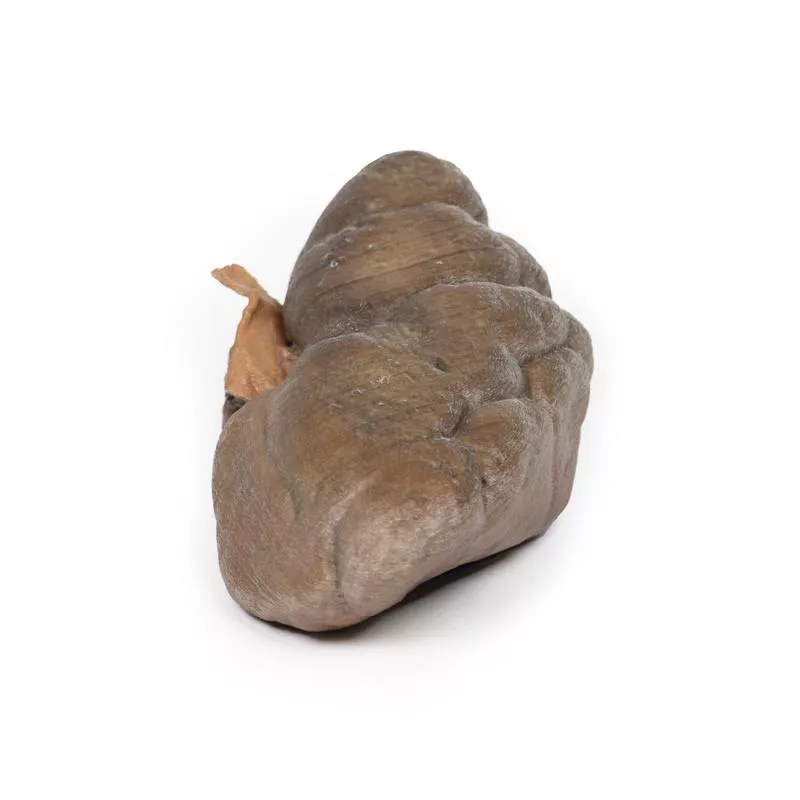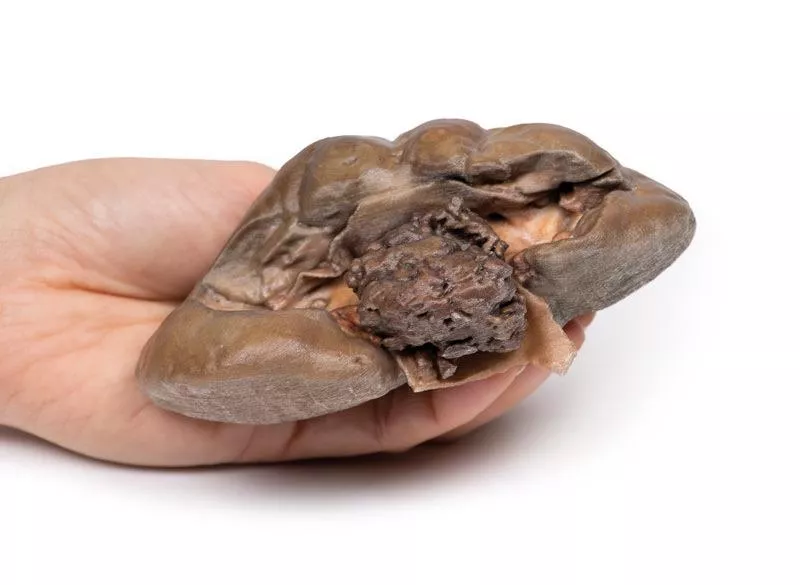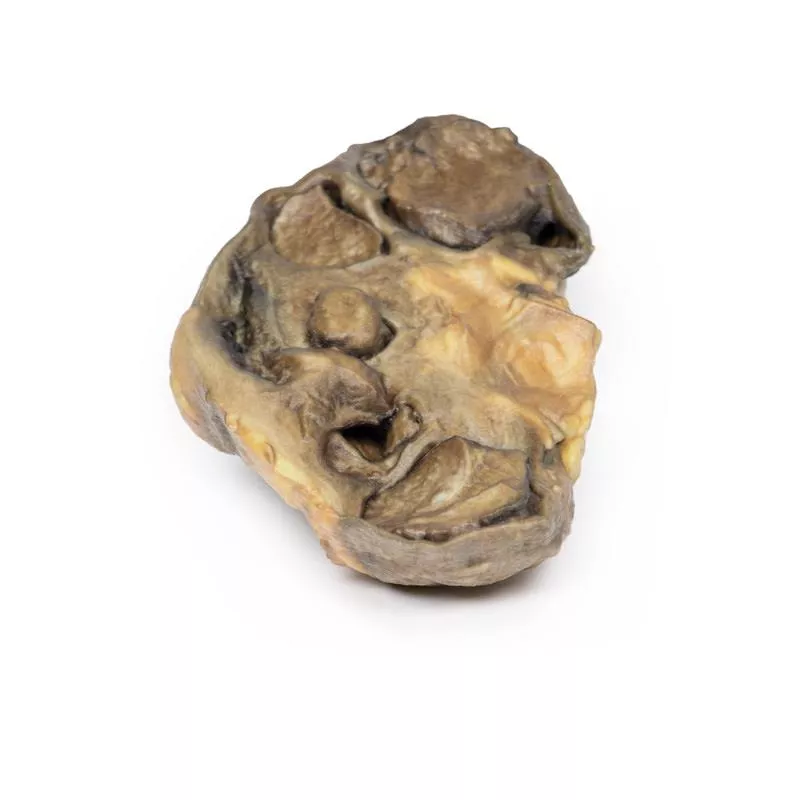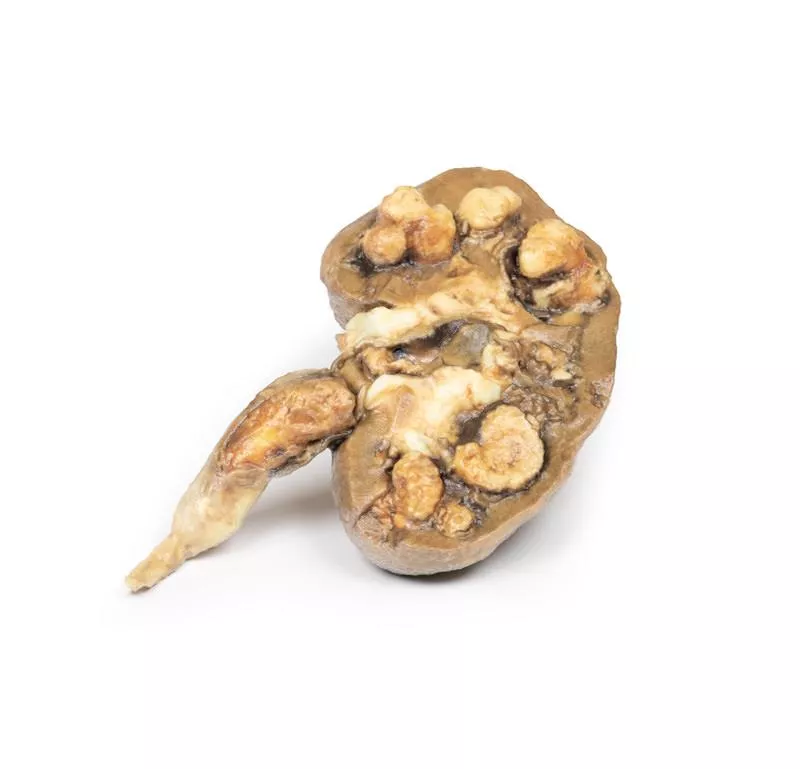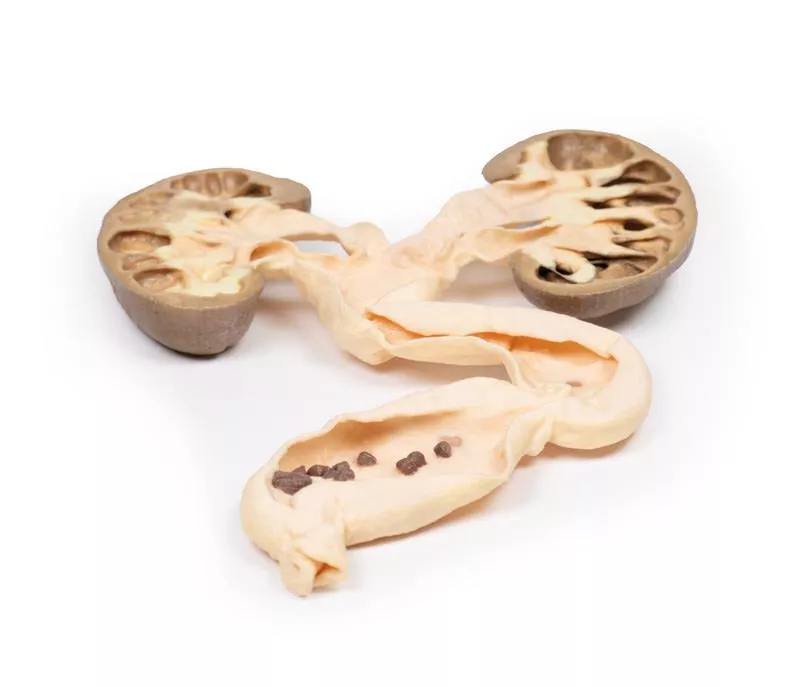Product information "Papillary Transitional Cell Carcinoma of the Renal Pelvis"
Clinical History
A 60-year-old man, after 40 years working in a paint factory, developed painless haematuria lasting one month. A CT scan revealed a suspected tumour in the left renal pelvis. He underwent nephrectomy.
Pathology
The kidney specimen shows preserved foetal lobulation and a friable papillary tumour, 35mm in diameter, obstructing and dilating the renal pelvis. Histology confirmed a papillary transitional cell carcinoma of the renal pelvis.
Further Information
5-10% of primary renal cancers arise from the urothelium lining the renal pelvis and calyces, similar to tumours in the ureter and bladder. They range from rare benign papillomas to common well-differentiated papillary carcinomas and aggressive poorly differentiated forms.
Early symptoms include haematuria due to tumour friability, with later signs like hydronephrosis and flank pain from obstruction. Tumours may be multiple, affecting pelvis, ureter, and bladder.
Risk factors include Lynch syndrome, analgesic nephropathy, smoking, and exposure to aromatic amines used in dye industries, such as benzidine and beta-naphthylamine.
Wall infiltration is common and worsens prognosis. Five-year survival ranges from 50-100% for low-grade non-invasive lesions to 10% for high-grade infiltrating tumours.
A 60-year-old man, after 40 years working in a paint factory, developed painless haematuria lasting one month. A CT scan revealed a suspected tumour in the left renal pelvis. He underwent nephrectomy.
Pathology
The kidney specimen shows preserved foetal lobulation and a friable papillary tumour, 35mm in diameter, obstructing and dilating the renal pelvis. Histology confirmed a papillary transitional cell carcinoma of the renal pelvis.
Further Information
5-10% of primary renal cancers arise from the urothelium lining the renal pelvis and calyces, similar to tumours in the ureter and bladder. They range from rare benign papillomas to common well-differentiated papillary carcinomas and aggressive poorly differentiated forms.
Early symptoms include haematuria due to tumour friability, with later signs like hydronephrosis and flank pain from obstruction. Tumours may be multiple, affecting pelvis, ureter, and bladder.
Risk factors include Lynch syndrome, analgesic nephropathy, smoking, and exposure to aromatic amines used in dye industries, such as benzidine and beta-naphthylamine.
Wall infiltration is common and worsens prognosis. Five-year survival ranges from 50-100% for low-grade non-invasive lesions to 10% for high-grade infiltrating tumours.
Erler-Zimmer
Erler-Zimmer GmbH & Co.KG
Hauptstrasse 27
77886 Lauf
Germany
info@erler-zimmer.de
Achtung! Medizinisches Ausbildungsmaterial, kein Spielzeug. Nicht geeignet für Personen unter 14 Jahren.
Attention! Medical training material, not a toy. Not suitable for persons under 14 years of age.




















